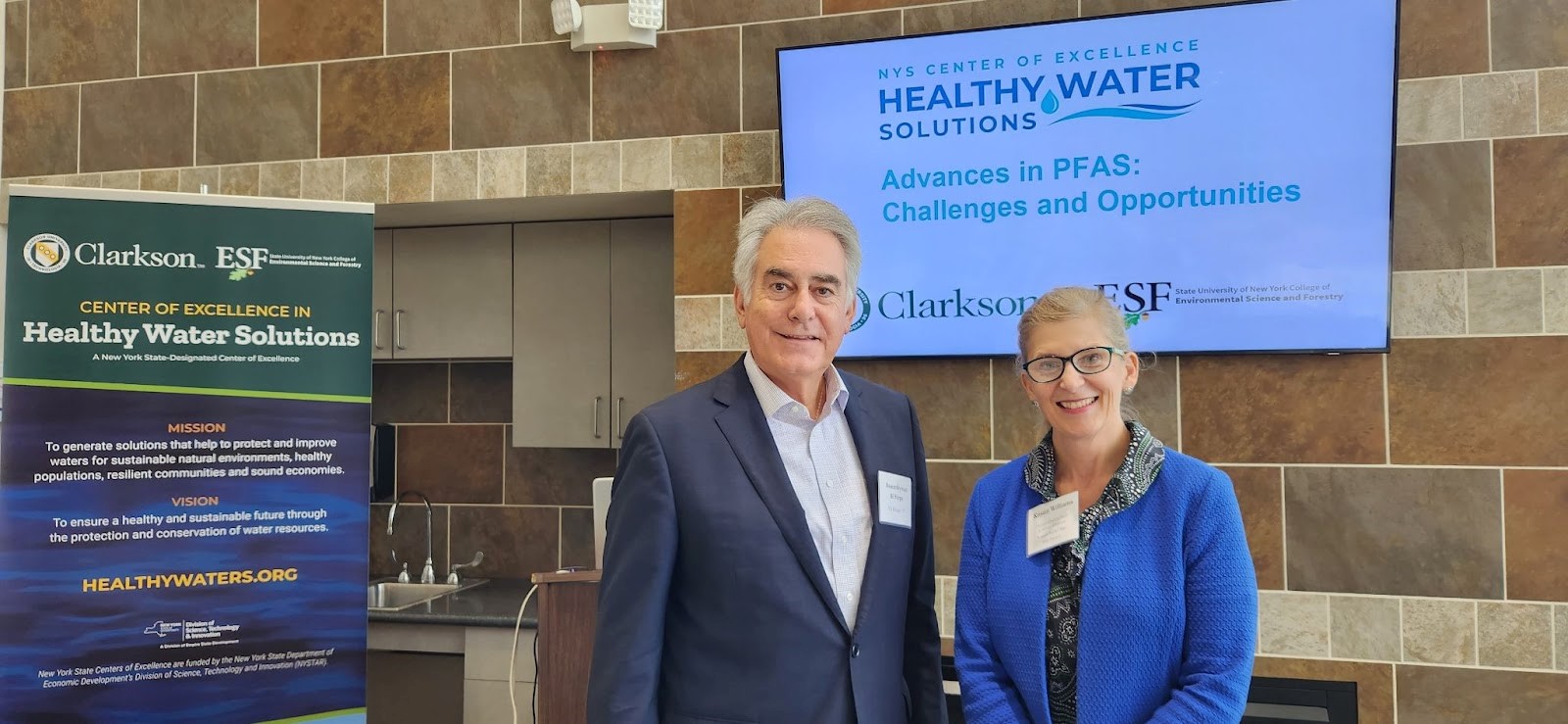Building Capacity to Address Toxic Chemicals in Water - Collaborative Workshop Held at Clarkson University to Discuss PFAS
The New York State Center of Excellence (CoE) in Healthy Water Solutions—a partnership between Clarkson University and the SUNY College of Environmental Science and Forestry (ESF)—brought together researchers, policy-makers, state agencies, elected officials, and other stakeholders for a day-long workshop on Oct. 6 at Clarkson University’s Capital Region Campus to address per- and polyfluoroalkyl substances (PFAS).

PFAS are chemicals defined as forever chemicals. PFAS chemicals are widely used in everyday products such as non-stick coatings on cookware, food packaging, and protective coatings on carpets and fabrics. They are also used in specific applications such as firefighting foams and ski wax. However, scientific studies have shown that exposure to some PFAS may be linked to harmful health effects in humans and animals.
As new monitoring has been done, PFAS have been increasingly detected in surface water and ground water throughout New York. New water quality regulations in New York and from the federal government will require water suppliers to make sure PFAS are held at very low levels in drinking water.
More than 30 in-person attendees and 20 virtual participants joined in a workshop to share information and coordinate new research directions to best address ways to cost-effectively detect and remove PFAS in water.
Mohamed Ateia Ibrahim, Environmental Engineer and Group Leader, Office of Research and Development for the U.S. The Environmental Protection Agency (US EPA) provided a broad overview of the latest PFAS science in a keynote address.
Two additional work sessions brought the group together to hear updates on efforts in risk assessment, monitoring, treatment, and remediation of PFAS, as well as solutions for PFAS removal and remediation in New York state. A concluding session sought group input on priority research areas and next steps for managing PFAS in New York.
Further details will be more widely shared in a summary report being prepared by the participants. Such workshops are critical for bringing together diverse expertise needed to solve complicated environmental problems such as PFAS contamination in the environment.
The CoE is focused on building partnerships to support innovative water science and water technology development, including PFAS. The CoE also provides outreach and education to the next generation of scientists, policy-makers and educators.
The New York State Center of Excellence in Healthy Water Solutions is a joint public/private institution endeavor between Clarkson University and SUNY College of Environmental Science and Forestry (ESF). A long history of water research at Clarkson and SUNY ESF led to the formation of this New York State funded Center of Excellence (CoE) in 2019. Additional information on the Center of Excellence in Healthy Water Solutions can be found at healthywaters.org.
NYS Centers of Excellence are funded by the New York State Department of Economic Development’s Division of Science, Technology, and Innovation (NYSTAR) to foster collaboration between the academic research community and the business sector to develop and commercialize new products and technologies, to promote critical private sector investment in emerging high-technology fields in New York State, and to create and expand technology-related businesses and employment. Any opinions, findings, conclusions or recommendations expressed are those of the author(s) and do not necessarily reflect the views of the New York State Department of Economic Development.
